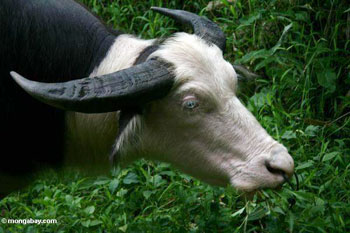World needs a 10% meat diet to fight global warming
World needs a 10% meat diet to fight global warming
mongabay.com
September 12, 2007
Cutting world meat consumption by 10 percent would have a substantial impact on greenhouse emissions, say doctors writing in the health journal The Lancet.
Livestock production, through the cultivation of feedstocks and land conversion, generates large amounts of greenhouse gas emissions, including carbon dioxide, methane, and nitrous oxide. Land clearing for cattle pasture is the largest driver of deforestation in the Amazon rainforest and contributed significantly to deforestation in Central America during the 1970s and 1980s.
“Worldwide, agricultural activity, especially livestock production, accounts for about a fifth of total greenhouse-gas emissions, thus contributing to climate change and its adverse health consequences, including the threat to food yields in many regions,” write the authors. “Particular policy attention should be paid to the health risks posed by the rapid worldwide growth in meat consumption, both by exacerbating climate change and by directly contributing to certain diseases.”

Greenhouse-gas emissions from the agriculture sector account for about 22% of global total emissions; this contribution is similar to that of industry and greater than that of transport. Livestock production (including transport of livestock and feed) accounts for nearly 80% of the sector’s emissions |
The researchers say that cutting meat consumption from an average of 100g per person per day to 90g would pay significant dividends for climate and global health. They say that less than 50g per day of meat consumption should from red meat, which is climatically more significant than other meat sources.
“The current global average meat consumption is 100 g per person per day, with about a ten-fold variation between high-consuming and low-consuming populations. 90 g per day is proposed as a working global target, shared more evenly, with not more than 50 g per day coming from red meat from ruminants (ie, cattle, sheep, goats, and other digastric grazers),” write the authors.
Meat consumption is growing rapidly in developing countries — lead by a growing middle class in China, India, and Brazil.
Anthony J McMichael, John W Powles, Colin D Butler, Ricardo Uauy (2007). Food, livestock production, energy, climate change, and health. The Lancet














